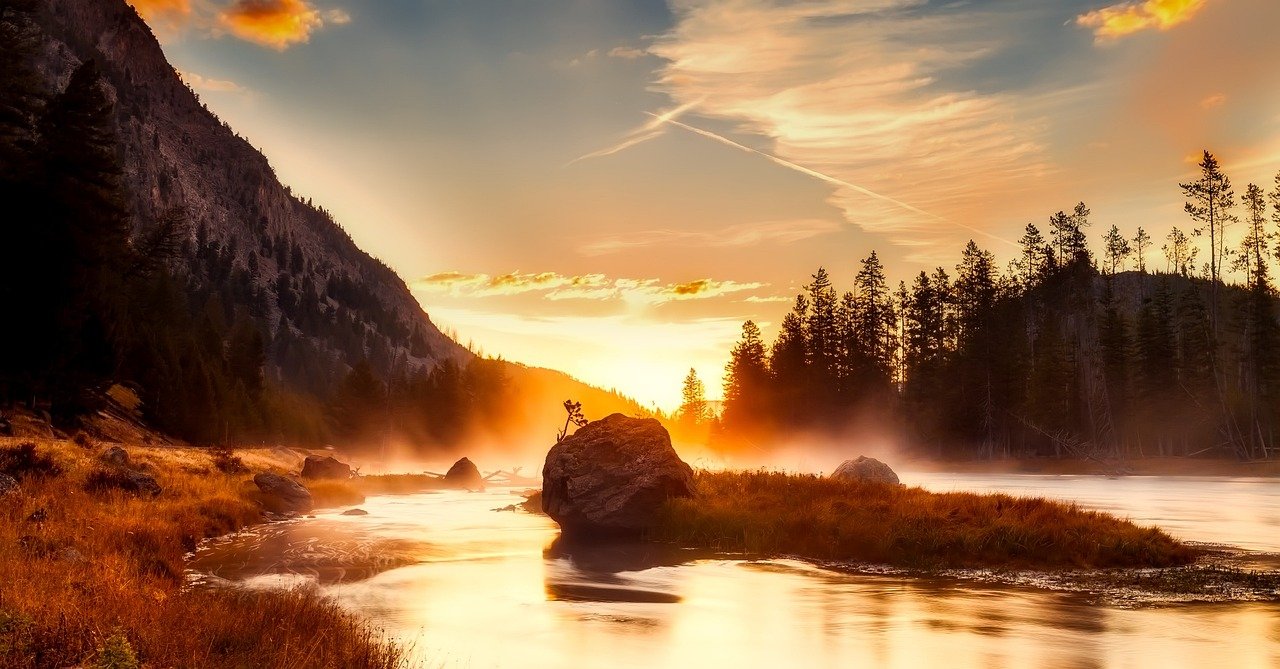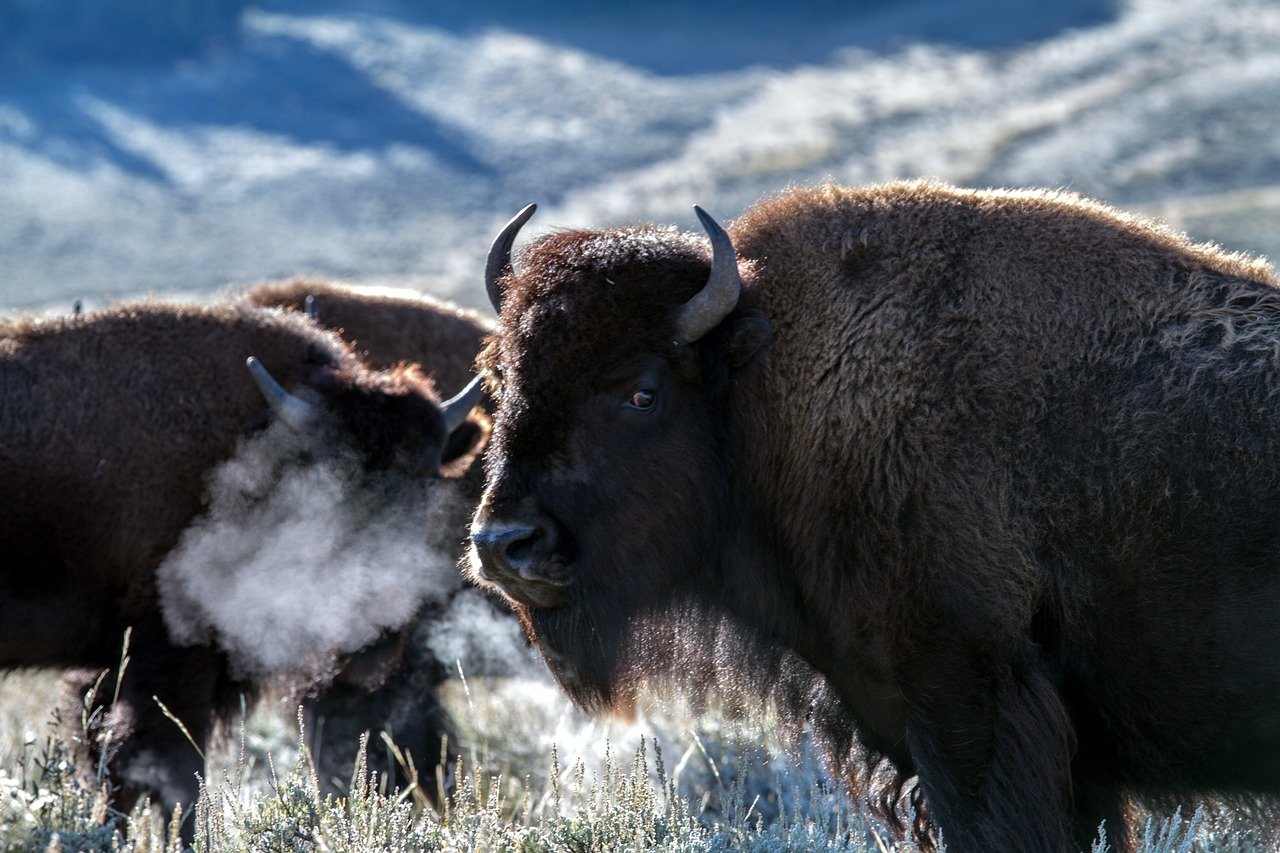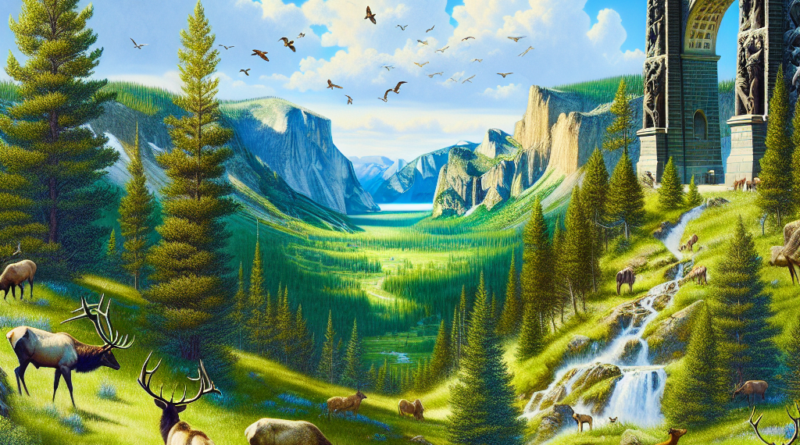North Entrance To Yellowstone National Park
In this distinctive article, it is our pleasure to bring you on an explorative journey to the North Entrance of the indomitable Yellowstone National Park. This portal stands as a gateway, leading into a world bursting with raw, untamed beauty. Remarkable wildlife, stunning terrains, and natural wonderous phenomena await, ready to awe-inspire any traveler brave enough to venture into this wild heart of America. As you go through each word of this article, we guarantee that you’ll gain the most intriguing insights into what makes the North Entrance to Yellowstone National Park truly exceptional.

Historical Background
Yellowstone National Park is renowned for its natural treasures and is a testament to the timeless endeavor to preserve the beauty of our natural world for future generations.
Establishment of Yellowstone National Park
The idea of Yellowstone was birthed from the collective vision of pioneers, conservationists, and lawmakers who saw the value in preserving this land of geysers, hot springs, and diverse wildlife. In 1872, President Ulysses S. Grant signed the bill establishing the national park, the first of its kind globally. Today, we stand as the custodians of these lands, ensuring its preservation and fostering a deeper understanding of its inherent value.
Significance of the North Entrance
The North Entrance has been a gateway to the wonders of Yellowstone since the park’s establishment. Serving as the only year-round entrance to the park, it holds the unique distinction of being the park’s first official entry point. The iconic Roosevelt Arch, bearing the poignant inscription “For the Benefit and Enjoyment of the People,” stands at this entrance and continues to welcome visitors as a symbol of the park’s enduring legacy.
Evolution and Changes Over Time
Over nearly 150 years, Yellowstone National Park has experienced numerous changes, adapting and evolving to meet the needs of each generation while staying true to its purpose. Legal and administrative adjustments, facilities improvement, research, and conservation initiatives reflect the park’s dynamic story. The North Entrance itself has also transformed, with updated amenities for visitors and enhancements for better accessibility.
Geographical Aspects
Location of The North Entrance
Situated in Park County, Montana, the North Entrance provides easy access to the park’s primary road network, leading straight to the iconic Mammoth Hot Springs. The entrance sits on the Montana-Wyoming state line, about five miles north of the park boundary.
Climate and Weather Conditions
Yellowstone experiences extreme and varied weather conditions. Summers can be warm with daytime temperatures that can exceed 70 degrees Fahrenheit, while the cold winter months can see temperatures plummet to below zero. Weather can change rapidly, and visitors are advised to come prepared for all conditions.
Flora and Fauna Native to the Region
The park is a sanctuary for diverse flora and fauna. Its dense forests are composed of lodgepole pines, while the meadows are studded with wildflowers. It’s also home to many mammal species including wolves, grizzly bears, and the emblematic American bison.

Tourism and Visitor Information
Tourist Attractions Near the North Entrance
Upon entering through the North Entrance, visitors are treated to an array of attractions. The historic Roosevelt Arch, Mammoth Hot Springs, Boiling River for swimming, and Fort Yellowstone are some of the key attractions that the area has to offer.
Visitor Centers and Information Booths
The Albright Visitor Centre, located in Mammoth Hot Springs, offers park information, backcountry permits, and an array of educational exhibits. It also serves as the park’s primary center for lost & found items.
Seasonal Activities Available to Tourists
Activities in Yellowstone vary by season. Summertime welcomes hiking, fishing, wildlife viewing and camping, while winter ushers in opportunities for snowshoeing, cross-country skiing, and guided snowmobile tours.
Camping and Accommodations
Nearby Campgrounds and RV Parks
For visitors seeking a more rustic encounter with nature, campgrounds and RV parks are available. Mammoth Campground, near the North Entrance, is open year-round and provides facilities for RV camping.
Hotels and Lodges in The Vicinity
For visitors seeking more comfort, the Mammoth Hot Springs Hotel and Cabins offer a warm and hospitable stay. There are also numerous hotels and inns in the nearby town of Gardiner, Montana.
Reservation Process and Policies
Reservations for hotels and campgrounds can be made through the Yellowstone National Park’s official website or directly with the accommodation provider. Campsites are typically in high demand, so early bookings are recommended. It’s also crucial to familiarize oneself with the park’s stay policies which include campground quiet hours and restrictions on fire usage.

Nearby Towns and Settlements
Gardiner, Montana
Located just outside the North Entrance, Gardiner is a bustling hub filled with eateries, shops, and accommodation options. It also offers numerous outdoor adventures such as white water rafting and horseback riding.
Livingston, Montana
Further north, the vibrant town of Livingston offers more accommodation and shopping options. It also serves as a gateway to the northern Rockies, boasting outstanding scenery and outdoor recreation opportunities.
Mammoth Hot Springs
Lying right inside the park, Mammoth Hot Springs is not just a natural marvel but also a center of activity. Home to the park headquarters, it hosts the Albright Visitor Center, Mammoth Hot Springs Hotel, and the historic Fort Yellowstone.
Park Rules and Regulations
Pet Policies
Pets are welcome in Yellowstone but their activities are significantly limited for their safety and to protect the park’s wildlife. Pets must be kept on a leash and are not allowed on trails or boardwalks.
Rules for Wildlife Viewing
When viewing wildlife, maintaining a safe distance is critical. Park rules require staying at least 100 yards from bears and wolves and 25 yards from all other animals.
Regulations on Camping and Fires
Camping is only permitted in designated campgrounds, and campfires are only allowed in provided fire grates. Regulations on wood and charcoal fires are subject to seasonal changes and restrictions due to high fire danger.

Trailheads and Hiking
Accessibility of Trailheads from the North Entrance
From the North Entrance, several trailheads are easily accessible. These paths lead to various park features, including the stunning Mammoth Hot Springs and the meandering Yellowstone River.
Popular Hiking Trails
Among the popular trails accessible from the North Entrance is the Beaver Ponds Loop Trail, which offers a beautiful blend of meadows, forest, and wetland habitats.
Safety Precautions for Hikers
Hikers are advised to stay on designated trails, carry a map, and be equipped with bear spray. The park’s variable weather conditions mean hikers should be prepared for sudden temperature changes and storms.
Wildlife Viewing
Common Wildlife in the Area
North Yellowstone teems with various wildlife species. Visitors can expect encounters with elk, bison, coyotes and numerous bird species. With luck, sightings of black bears, grizzlies, or wolves may also be possible.
Best Times for Wildlife Viewing
While wildlife can be seen year-round, dusk and dawn are when animals are most active. Spring and early summer are the best times for spotting wildlife with their young.
Tips for Ethical and Safe Wildlife Viewing
Never approach or provoke wildlife, always maintain a safe and respectful distance. Use binoculars or telephoto lenses for close-up views. Never feed wildlife as it’s harmful to them and against park regulations.
Conservation Efforts
Protection of Natural and Historical Resources
Yellowstone National Park is deeply committed to preserving its natural and historical resources. Whether it’s curbing invasive species, monitoring air and water quality, or preserving historical structures, the park’s wide range of conservation initiatives reflect this commitment.
Current Conservation Projects
Yellowstone’s current projects include studies on bison and bear populations, invasive species control programs, and restoration work on historical features like the Roosevelt Arch.
Volunteer and Donation Opportunities
Visitors can support conservation efforts by volunteering their time or making a donation. Volunteer opportunities range from campground hosting to citizen science projects, while money raised through donations funds various preservation initiatives.
Impact of Climate Change
Effects of Climate Change on Yellowstone’s Ecosystem
The park’s ecosystems face serious challenges due to climate change, such as reduced snowfall, increased frequency and severity of wildfires, and shifts in wildlife populations and their habitats.
Park Initiatives to Combat Climate Change
In response, the park has initiated several measures including monitoring ecosystem responses to climate change, reducing its carbon footprint, and creating adaptation strategies to safeguard its resources.
How Visitors Can Help
Every visitor’s actions can make a difference. Visitors can help by practicing responsible tourism, following park regulations, and supporting conservation efforts. Small changes like reducing waste, staying on designated trails, and leaving no trace can have a significant impact on preservation efforts.




